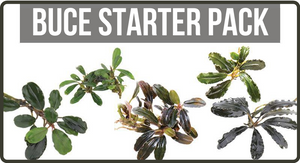Creating a Traditional Nature Aquarium Layout
When you’re new to aquascaping and are looking to set up a new tank, it can be a bit difficult to know where to begin. Some of the most frequent questions I receive on my Instagram account @shrimpery run along the lines of: “what kind of CO2 setup do I need,” or “what kind of soil do you use?” Because I recently set up a new high tech aquarium in my UNS 60U aquarium, I figured that this would be a good opportunity to share my thought process during the setup, along with details about gear and materials used.
My vision for the new scape was a traditional nature aquarium layout, with more prominent hardscape than I usually use. Starting out with the 20 gallons, 60cm rimless UNS aquarium as a canvas, a Twinstar 600SP light fixture, and an Eheim 2217 filter (with stainless steel lily pipe inflow and outflow), I was ready to add substrate. Because I use high tech plants, I wanted to use an enriched substrate, but I wanted to avoid an initial dump of ammonia that sometimes accompanies aqua soil. To this end, I used UNS Controsoil, which I sloped from the back of the tank to a point about three-quarters from the front of the tank. I left some bare glass along the very front to be filled with sand after adding hardscape.

I used some nice, irregularly shaped river stones to create a linear embankment on the left hand side of the tank. Interwoven on top of the stones, I used branches of wood recycled from previous layouts (already colonized with epiphytic aquatic plants such as bucephalandra, anubias, and Hygrophila pinnatifida) to create the impression of tangled roots growing at the side of a flooded creek bed. To heighten the atmospherics, I incorporated the moss-like Riccardia chamedryfolia and Christmas moss (Vesicularia montagnei) into the hardscape. This time, I used a bit less moss than I normally do (leaving some branches and stones exposed) in order to prevent the hardscape from getting lost in the sauce, so to speak.

Once the hardscape was in place, I added a thin layer of sand to the front portion that I had left blank. To impart a more natural look, I used tan river sand, scattering some gravel of the same color here and there for texture variation. Next, I moved on to my favorite part of setting up a new scape: adding colorful stem plants. As usual, I used some of my favorites: Rotala ‘colorata,’ Rotala ‘mini butterfly,’ and Ludwigia red mini. In addition, I added some new ones (for me at least), including Rotala macrandra, Ammania gracilis, and Myriophyllum sp. Guyana mini, along with a few piecemeal others (sourced from Buceplant). As always, I made sure to plant extremely dense from the start to ensure that the plants have a good head start over the algae. Finally, I added a pressurized CO2 setup, using clear tubing, a glass drop checker, a 20oz paintball canister, and a UNS mini regulator + paintball adaptor, on a timer.

I was especially careful when I filled the tank with water; it’s best to do a slow trickle to avoid undoing all your hard work on the substrate and plants. Since setup, I’ve been performing 30% water changes twice a week, regularly trimming plants, and occasionally scraping green dust algae off the front glass. With everything stable in terms of growth and maintenance, I felt comfortable adding shrimp and fish almost immediately (especially since I recycled filter media from a previous setup, and thus did not have to worry about cycling the tank). I added a few black neon tetras, along with ember tetras and blue dream shrimp (Neocaridina davidi).
For a certain type of person (yours truly), setting up a new aquascape is one of the most fun activities out there. Hopefully, this little guide will give you a starting point for a high tech scape your own, or inspire you to redo an existing layout you’re feeling a little bored with. Happy scaping!

Tell us - Was this article helpful? Please leave a comment below!
If you have any questions regarding this article, please DM us on Instagram, Facebook, or email support@buceplant.com so we can assist you - @buceplant





Leave a comment